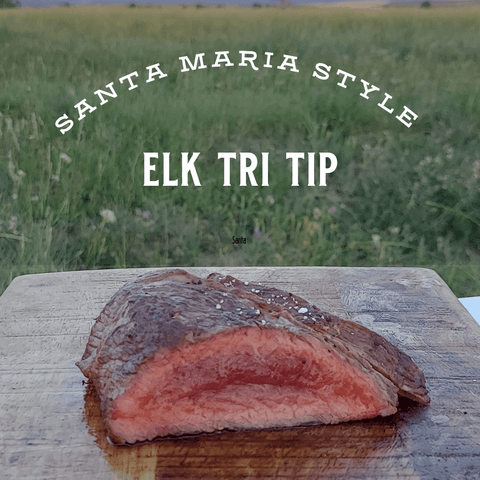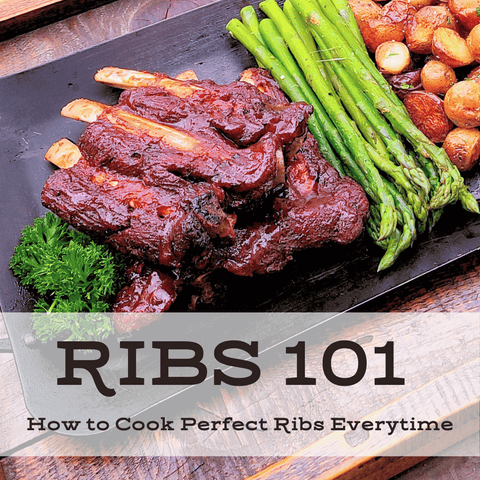
Your enjoyment of our exceptional products is our top priority! Within this article, you'll unearth essential insights into Buffalo and Elk meat, including their nutritional profiles, culinary secrets, and links to a collection of delectable recipes and techniques we're eager for you to explore.
Buffalo (American Bison) were the Plains Indians' primary food and clothing source. They once numbered in the tens of millions. Indiscriminate slaughter rendered Buffalo almost extinct by the year 1900. There were less than 600 Buffalo remaining alive, but today there are over 500,000 Buffalo with about 450,000 of those being raised on private ranches across the USA and Canada.
Our Buffalo and Elk graze naturally on open-range grasslands in a ranch setting. For the last 60 days, the Buffalo are naturally grain fed to increase tenderness and to promote a sweet and rich flavor. We hand select only the finest Buffalo and Elk available, then carefully trim the fat and vacuum pack the product. Removing the air significantly prolongs the shelf life and retains optimum flavor. Your steaks can be stored in the freezer for up to a year with a good vacuum pack.
What Does Buffalo or Elk Taste Like?
Buffalo and Elk meat tastes similar (slightly sweeter) to a high-quality cut of beef. Buffalo and Elk meat stand out as being much higher in nutrition (as do all game types of meats) and are often praised for their natural wild flavour and tenderness.
Why Choose Buffalo and Elk Meat?
Research continues to prove that Buffalo and Elk are lower in fat, calories and cholesterol than beef, pork, turkey, skinless chicken, and even some fish. In addition, Buffalo or Elk contributes about 69% more iron to your diet than beef; with higher levels of vitamins, minerals, and twice as much Beta-Carotene as traditional grain-fed meats. Buffalo meat is also an excellent choice for those trying to lower their cholesterol, fight disease, build muscle, and stay healthy while still enjoying red meat.
Important differences when comparing Buffalo and Elk to Beef include:

Thawing and care of your meat
If your steaks have just arrived, please refrigerate or refreeze your product immediately. When the product was shipped from the Jackson Hole Buffalo Meat Co., your steaks were shipped frozen with dry ice. By the time they arrive, there will be little or possibly NO dry ice left in the insulated container. Please do not be concerned! As long as the meat is cool to the touch, you may serve it or refreeze it with confidence. Do not touch the dry ice, as it may cause freeze-burn.
Storing your meat
It is best to keep your steaks or burger in the vacuum-sealed bag in your refrigerator until you are ready to cook them. If you plan to save any of your steaks later, it is okay to refreeze them. Just store them in your freezer at the lowest possible temperature. Even a small increase in temperature can shorten the storage life of all food in your freezer. With a good seal, your steaks or burger will easily hold up in the freezer for 12 months.
Cooking your meat
Buffalo and Elk meat can be cooked much like beef and often share a taste profile that's similar to beef, albeit with some delightful distinctions. Buffalo boasts a fuller, richer, and slightly sweeter flavor than beef. Neither Buffalo nor Elk has a strong "gamey" or wild taste. You can use your favorite beef recipes with Buffalo and Elk by remembering a few key tips:
- Cooking Time: Because Buffalo and Elk meat has little to no marbling or fat, the steaks will cook much faster (fat acts as an insulator and slows the cooking process) in fact Buffalo and Elk meat cook about 1/3 faster than beef, so to avoid disappointment, be very cautious not to overcook your meat.
- Doneness: Game type meats, like Buffalo and Elk are best served rare to medium, still red or pink in the center. Cooking past medium may result in slight dryness.
- Meat Thermometer: Always use a meat thermometer to ensure the correct internal temperature. Aim for around 120°F (49°C) for rare, 130°F (54.5°C) for medium-rare, and 140°F (60°C) for medium. it is important to note that these are FINAL temps, after resting, so the meat itself should be pulled 5-10 degrees before the desired temperature and have a 5-10min rest. Are you new to using one? Check out this article on How to Use a Meat Thermometer the Right Way.
- Roasting Temperature: For roasts, lower the temperature to 275°F (from 325°F for beef) and expect a similar cooking time. This gentle roasting method helps preserve the tenderness of the meat.
- Oven Broiling: We don't recommend this, but if you want to try it, move the rack a notch lower than you would for beef, this adjustment ensures even cooking without overcooking the exterior.
- Grilling: The Sky is the limit here! Again just be aware that the meat will cook faster than beef. Check out these articles for some detailed tips: Two-Zone Fire, and Cooking From Frozen.
- Smoking: prepare the meat by trimming excess fat and marinating it for some extra flavor. Preheat your smoker to 225°F to 250°F, place the meat inside, fat side up if applicable or bone side down. Smoke low and slow until the internal temperature reaches your desired level of doneness. Periodically basting or spritzing the meat for moisture, then let it rest before slicing and savoring the rich, smoky flavors. Check out our Guide to Cooking Perfect Bison Ribs or try this classic Dry Rubbed and Smoked Bison Ribs recipe.
- Sous Vide: The Sous vide cooking method is an excellent choice for preparing Buffalo and Elk meat because it allows for precise temperature control, ensuring that the lean meat remains tender, flavorful, and perfectly cooked throughout. The gentle, low-temperature water bath in sous vide cooking helps to break down tough connective tissues while retaining the natural juices, resulting in consistently moist and delicious meat.
- Ground Meat: Ground Buffalo and Elk burger is leaner (around 95% lean) and cooks faster. No need to cook it to well done. Medium is ideal. (pink in the center). There's minimal shrinkage when cooking Buffalo or Elk burger, so what you put in raw is what you'll have cooked. Thicker patties retain moisture better, so aim for thicker burgers for juicier results. A 3/4 to 1-inch thickness is ideal.
- For more tips, tricks, and inspiration: Check out our Culinary Academy
Remember, if you have any questions or need further guidance, don't hesitate to call us at 800-543-6328. Enjoy your culinary adventures with Buffalo and Elk, and savor the unique flavors they bring to your table!
The Jackson Hole Buffalo Meat Co. has a rich heritage dating back to 1947. Nestled in the breathtaking landscapes of Jackson Hole, Wyoming, our singular focus revolves around crafting the finest 100% Buffalo and Elk meat products. For over 75 years, we've dedicated ourselves to producing and delivering these nutrient-rich, sustainable meats across the expanse of the United States.


